Full disclosure: I may have more than a mild obsession with ginger. These days I’m finding myself craving it regularly. I love it added to my favorite Asian or Indian-inspired dishes, drinking it in tea form, and having ginger dressing no less than three times a week on my salads. The slightly spicy, savory flavor can truly transform a meal. But the greatest news about ginger is that not only is it delicious, it’s also good for you.
Growing ginger may sound intimidating, but once you understand what makes it thrive, it’s actually one of the simplest things to add to your garden. Before we jump in, let’s cover some of the basics about this unique plant.
Growing Ginger Root Basics
When we talk about eating ginger root, what we’re really eating is the ginger’s rhizome. The green stalk of the plant grows out through the top of the rhizome, and the ginger’s roots come out from the bottom of the rhizome. We’re going to call the rhizome “ginger root” anyway, as that’s what everyone calls it.
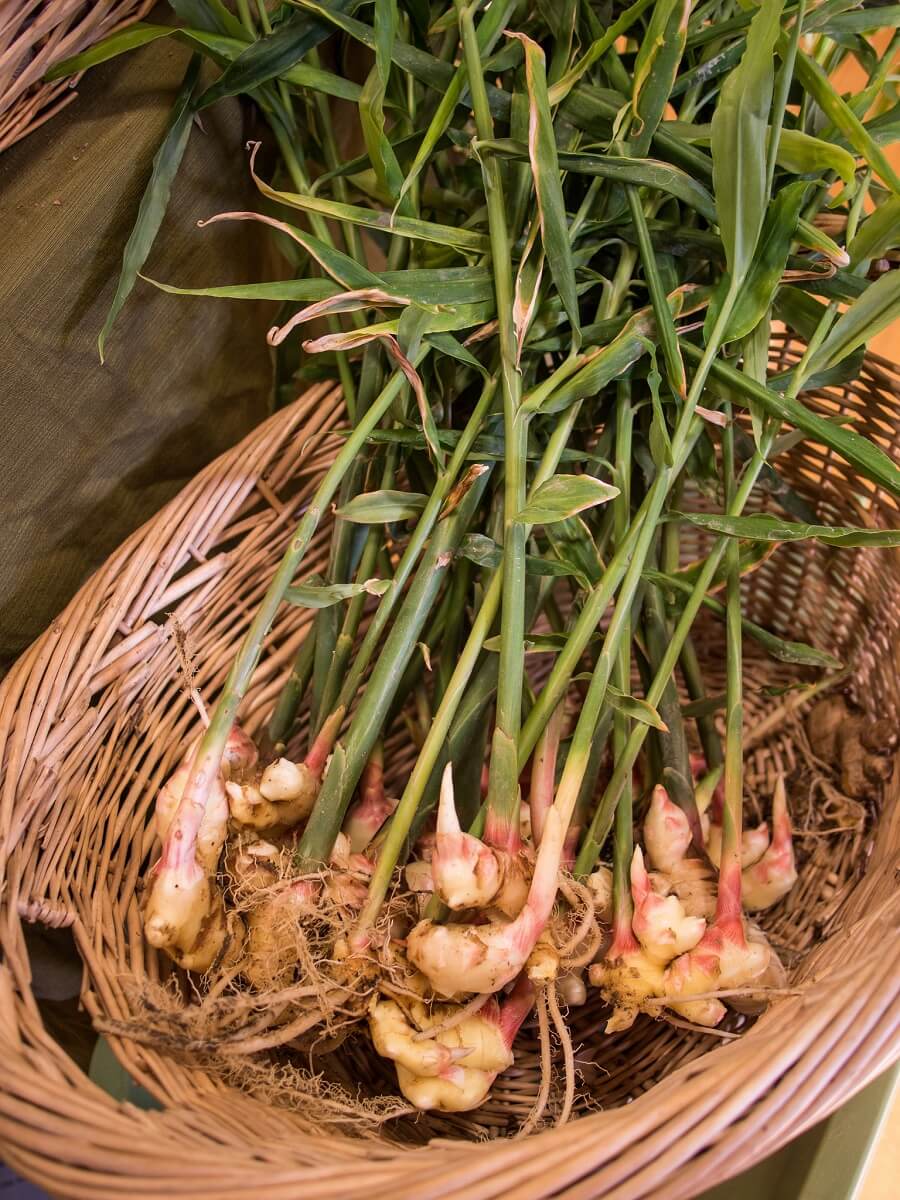
Where To Grow Ginger Root
Ginger needs a sheltered spot, filtered sunlight, rich, moist soil, and warm, humid weather (hello, Florida). USDA planting zones 9-12 have the best growing conditions.
What ginger really doesn’t love is frost, direct sunlight, strong winds, and soggy or waterlogged soil. If you live outside USDA planting zones 9-12, you probably shouldn’t plant ginger outdoors.
If you live in a cooler climate, it’s not impossible to grow ginger, but you may need the help of a greenhouse. It’s probably best to grow it indoors to maintain the warm climate that ginger needs. Many people grow ginger outdoors in cooler climates simply for the beauty of the green plant itself as well as its beautiful yellow flowers and the lovely smell it exudes when you brush against it, without having any expectation of harvesting the root.
Planting Ginger Root
To get started growing ginger, you’ll simply need some fresh rhizomes (what we commonly refer to as ginger root) from a gardener friend who already has an established ginger plant, or from a store. Generally, ginger isn’t grown from seed. You’ll want to find pieces with well-developed growth buds. It’s not a bad idea to soak it overnight, especially if you’re using ginger root from a store.
There is no reason to let the ginger sit in water until it sprouts roots (despite what you may read on the web). Ginger will be happiest in warm, rich, moist soil where it can breathe immediately.
Whether you grow ginger in a pot or in a garden, make sure you use good quality soil mixed with some compost. Make sure your soil is moist, but not soggy, and that your garden or pot has proper drainage.
The best time to plant ginger root is late winter/early spring. Plant the roots 2-4 inches deep with the root buds facing up.
They don’t take up a tremendous amount of space, so if you’re planting more than one plant, you’ll only need to space them 6-8 inches apart. The plant itself will grow to be about 2-4 feet tall, and the rhizomes themselves will grow in tight clumps.
Maintaining Ginger Root
I don’t want to say that ginger is a “set it and forget it” plant, but essentially, it is. Once planted in rich soil, it will produce year after year.
Harvesting Ginger Root
You can begin to harvest ginger when it’s as young as four months old. Ginger at this stage is considered “green ginger” and has less flavor than ginger that is more mature. Generally, it takes about 8-10 months for ginger to be fully matured. To get at the ginger root early, just dig carefully at the side of the clump beneath the dirt.
Once the entire plant is matured and ready, you’ll notice that the leaves of the plant have died down. Now you can dig up the entire plant. If you’re growing ginger in pots this is very simple—you won’t have to do any digging, just tip the plant out of the container.
Once you have the clump of rhizomes out, break them up, select a few for planting, which you can do immediately for the next season, and harvest the majority. Use whatever fresh ginger you want to right away, and the rest can be stored in brandy, dried, pickled, fermented, or frozen.
Uses For Ginger
Ginger in its various forms can be used for a remarkable number of things.
Ginger is originally from the tropical rainforests of southern Asia and was one of the first spices bought and traded in ancient times. Today, India produces the most ginger of any country in the world.
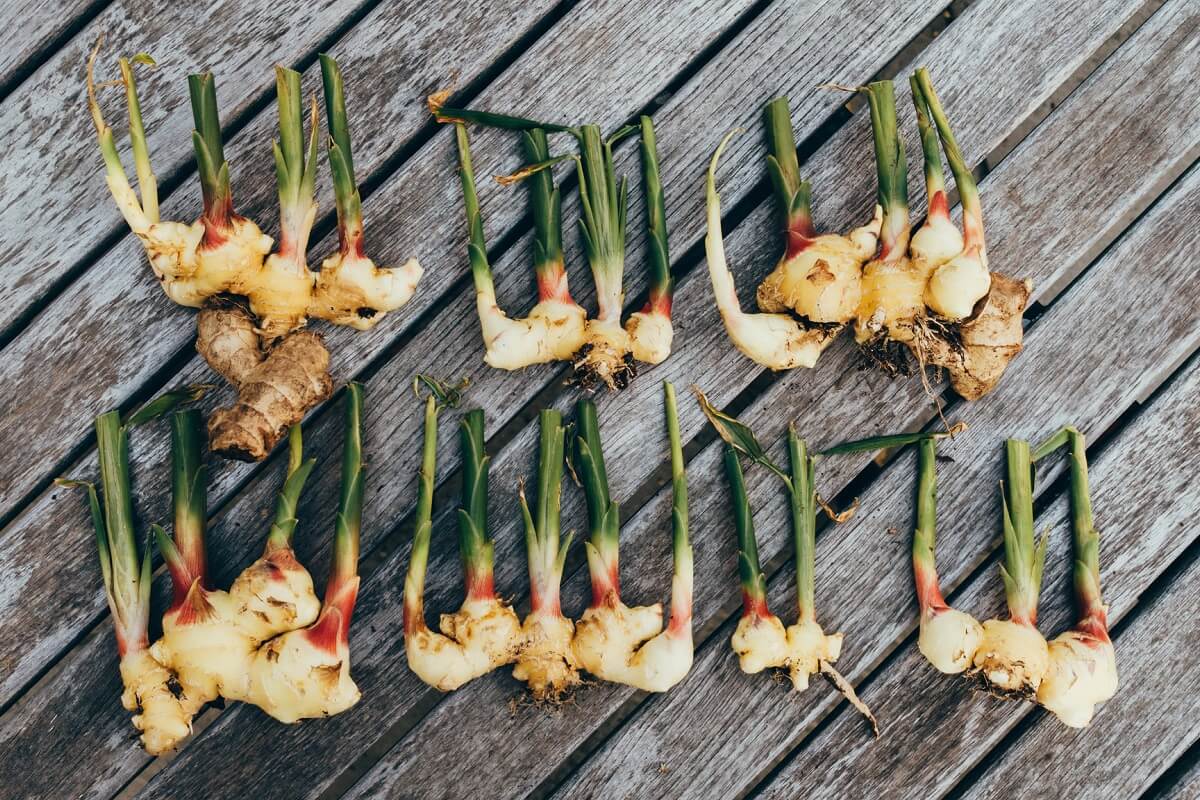
Ginger’s flavor enhances tea, lattes, soups, and stir-fry. It’s also delicious when mixed with its sister plant turmeric to make curries and turmeric tea.
As of late, ginger is garnering a lot more attention because of its health benefits. I never travel without a few bags of ginger tea in case of an upset stomach. There are several ways to curate ginger into some helpful home remedies such as cough syrup and drops, sore throat spray, or wellness tonics to prevent illness.
Ginger can also be made into capsules for health complaints like morning sickness, indigestion, and fever. In dried powder form, people sprinkle it in their bath to soothe sore muscles and body aches.
If you’ve not yet taken the plunge into growing ginger, remember that once you’ve provided it with the optimal environment, it will continue to reward you year after year.



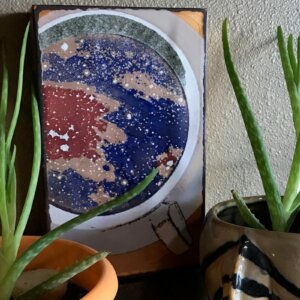
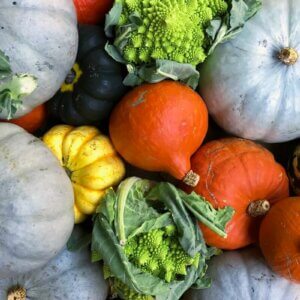



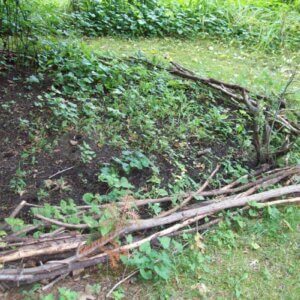

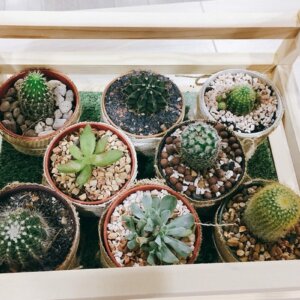




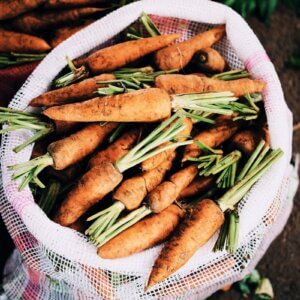




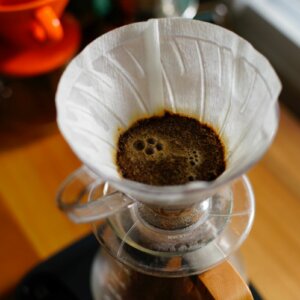



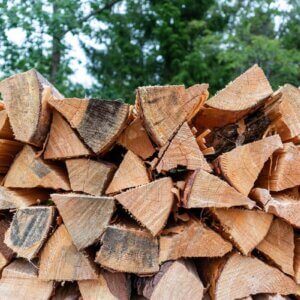
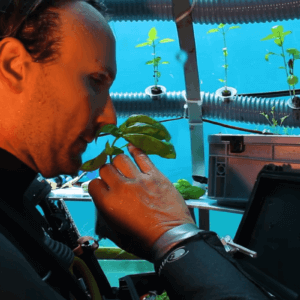




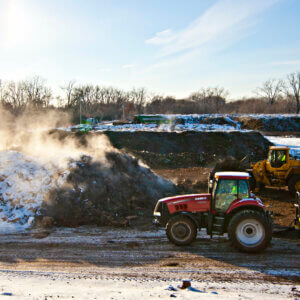

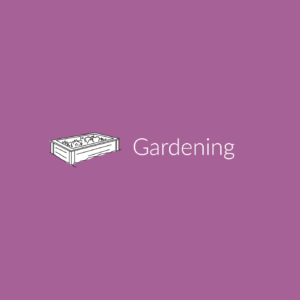


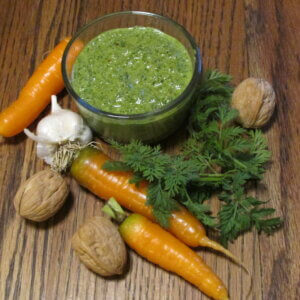




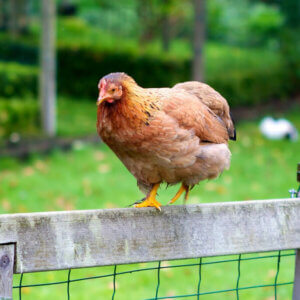

thanks for the 101. gonna try it inside in OK for now. then outside after winter…